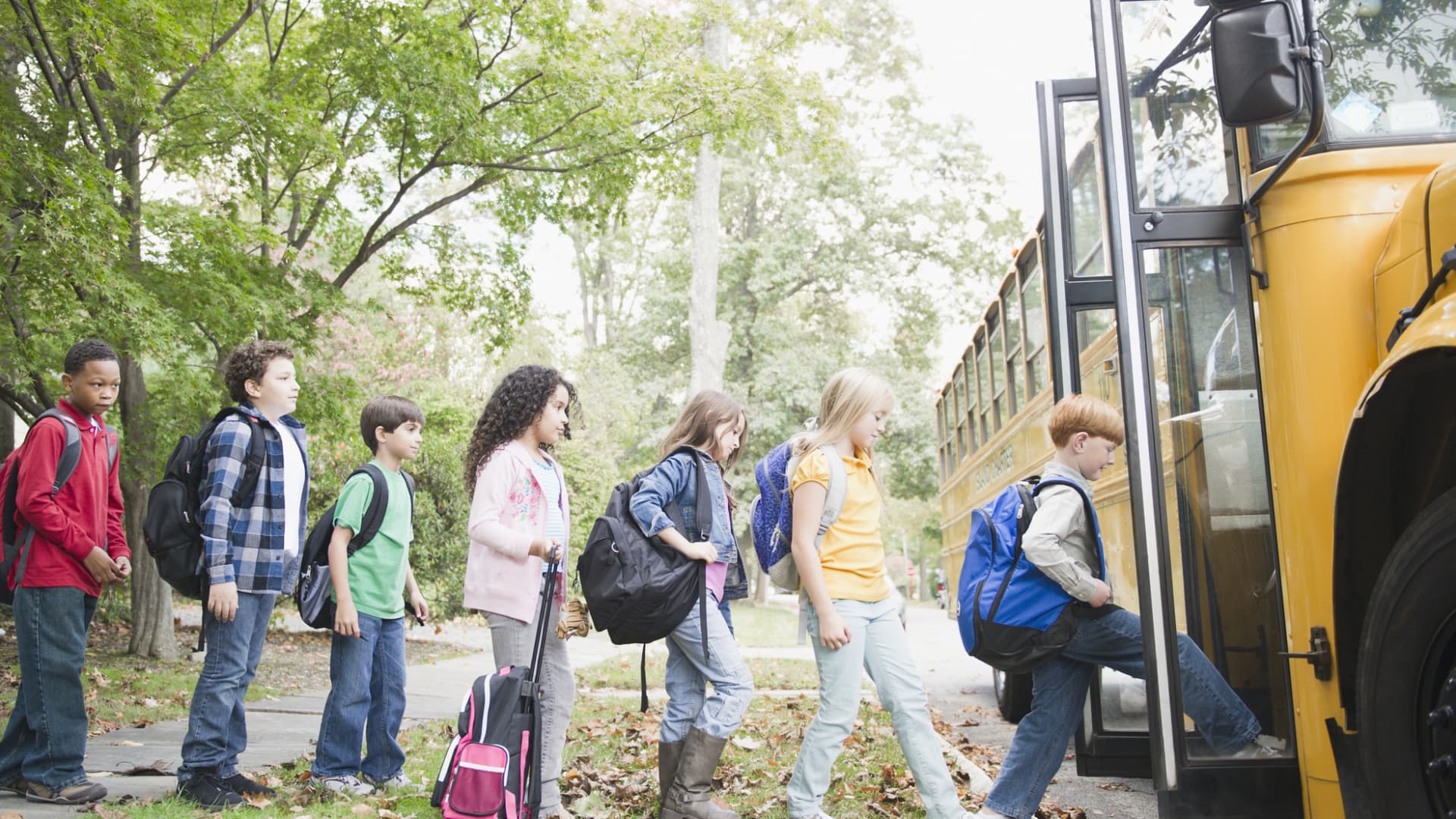Back-to-school shopping hasn’t been easy this year for Lauren Cyr.
The mother of three has searched for deals and spread out her shopping across multiple paychecks. Still, the 31-year-old sees higher price tags on everything from backpacks to paper — and the summer ritual is squeezing her family budget more than it did in prior years.
“Before I even went shopping, I will tell you, I had a full-on panic attack and cried,” said Cyr, a customer service manager living in Ruskin, Florida. “It’s just a headache.”
Cyr isn’t alone. An average family with children in elementary through high school plans to spend a record $890.07 on back-to-school items this year, according to a survey of more than 7,800 consumers released last month by the National Retail Federation and Prosper Insights and Analytics. Total spending on school-related items for students in these grades is expected to climb to a new high of $41.5 billion.
One silver lining: Back-to-school shoppers were less likely to say they are spending more because of higher prices in 2023 than in 2022, according to the NRF data. Instead, consumers have reported that purchases of more supplies and bigger-ticket items have contributed to higher spending this year.
Still, rising costs can leave millions of Americans in a lurch as they try to fill the backpacks of school-aged children this year. While inflation has broadly slowed, consumers may not feel any respite as prices of school supplies are still rising.
“For the average family, there’s going to be sticker shock,” said Jay Zagorsky, a professor at Boston University’s Questrom School of Business.
He said shoppers should not insist on buying a specific item or brand as prices rise: “By being flexible in what you’re purchasing, you can actually come away with both a happy child and a happy wallet.”
CNBC used the producer price index — a closely followed gauge of inflation on businesses measured by the Bureau of Labor Statistics — to track how the costs of making items typically purchased for students has changed between 2019 and 2023. PPI data breaks out the changing costs of specific items through a sampling of wholesalers.
Those producers can then pass added expenses onto consumers in the form of smaller products or higher prices.
Retailers from Gap to Kohl’s are trying to woo consumers with deals as prices go up. Walmart said it’s kept the school supply basket at the same price as last year by offering common items like backpacks starting at $6. Target kicked off the back-to-school season in early July with a special sale for customers who belong to its loyalty program.
The federal data is not a perfect representation of the change in spending, as the amount customers pay can vary by brand, store or location. Prices may also not perfectly match the path of inflation because the products are made and ordered by retailers months before back-to-school season ramps up, according to Zagorsky.
But the federal data can offer insight into how much more consumers across the country are paying for key items as children head back to the classroom.
Paper
Two data points measure the changing cost of paper.
First, there’s the classic writing and printing paper. There are also tablets and pads of paper.
Prices of both fell early in the pandemic before surging. Paper cost producers about 24% more in June 2023 than it did the same month four years prior, while tablets and pads were up 33.1% in that period.
Writing, art and office supplies
The price of products like glue and pencils are also rising.
Inflation for pens, markers and mechanical pencils — as well as parts associated with these products — appears to have peaked. But prices were 13% higher in June 2023 than in the same month in 2019.
The rate of inflation for a group of goods that includes lead pencils and other supplies typically used in offices and for art has moved similarly. Prices climbed 23.2% from June 2019 to June 2023.
Backpacks
Perhaps the most iconic symbol of a student is also more expensive to produce.
Backpack prices have increased less than they have for other goods, but they are still 10.5% higher in June 2023 than they were the same month in 2019.
— CNBC’s Gabriel Cortes and Melissa Repko contributed to this report.
